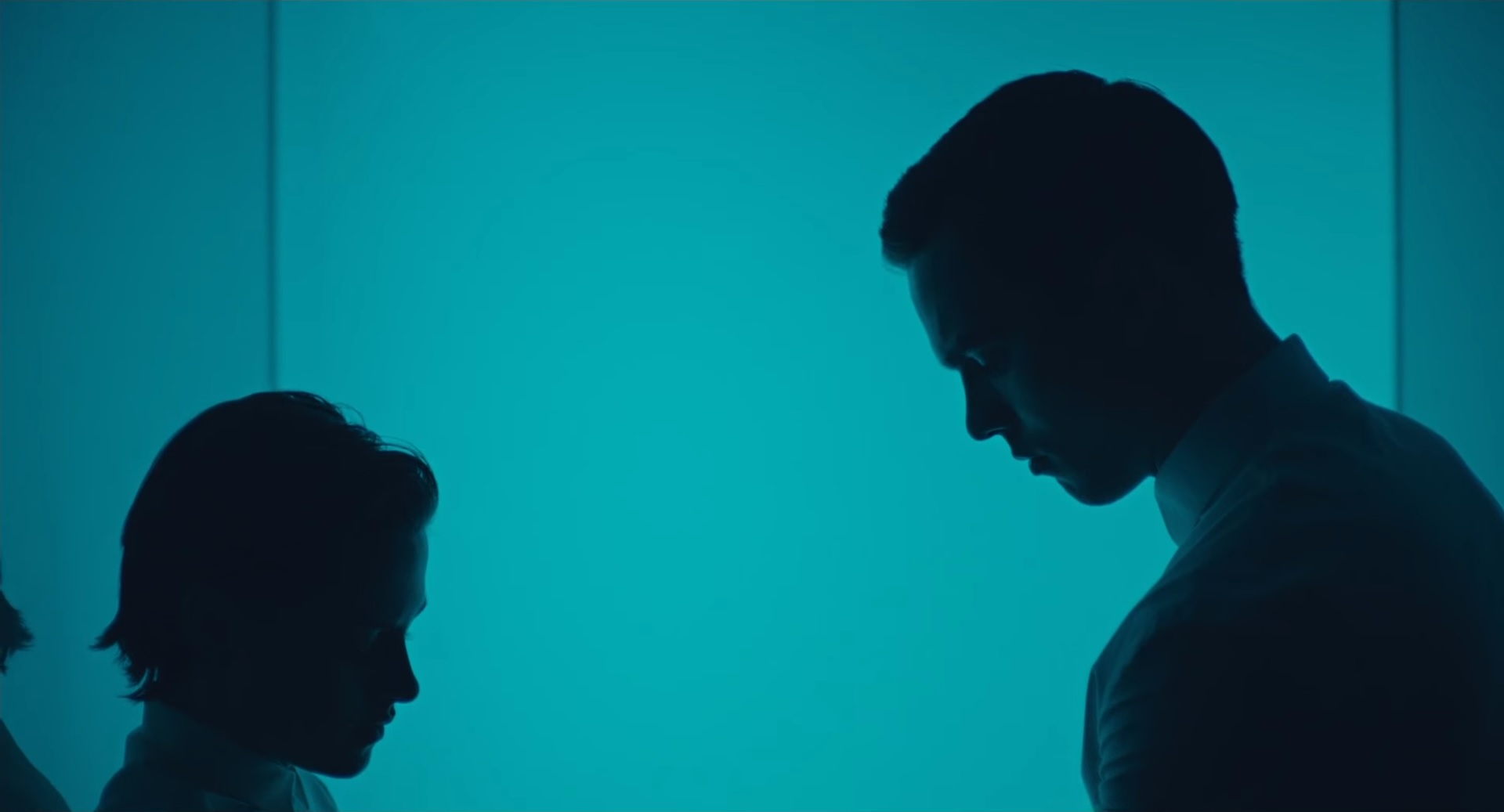Equals
by Cat McAlpine
In a blue-white landscape where form follows function, director and story writer Drake Doremus must choose between head and heart. He chooses heart, every time.
I’ve seen some parallels drawn between this film and 1984 (fair) or Romeo and Juliet (a bit of a stretch). Is any story wholly original? No. Does Equals borrow? Yes. And if I were to point fingers, I’d look to Lois Lowry’s “The Giver.”
In “The Giver,” a young boy learns to feel pain and passion, to serve as his community’s vessel for the humanity that has been anesthetized. It’s not until he discovers color in a red apple that you realize, already half-way through the text, that the author has not used a single colored adjective. The world until that point has been flat, black and white.
The lesser film adaptation betrays this wonderment and horror in its added visual dimension, shooting for the most in grayscale.
In Equals, a remaining fraction of the human race lives in a community called The Collective. They have been genetically engineered to not feel emotion. Their DNA, lobotomized. However, emotion does surface in what Collective leaders warn is a dangerous disease called “Switched on Syndrome.” Those with advanced stages are encouraged to kill themselves, or are otherwise contained and dealt with at The Den.
Early scenes are shot in harsh white with moody blue undertones, but when Silas (Nicholas Holt) and Nia (Kristen Stewart) discover each other, and love, the color palate shifts. Oranges and reds appear, in flares, and in the film’s coloring as a whole. Purples emerge where the two moods meet. Paired with a beautiful lighting design, all tortured silhouettes and sets filled with glass and steel, the imagery is powerful. Not unlike black and white versus color, Doremus toys with red versus blue.
Unfortunately, Equals is so enchanted with its own aesthetic that it almost stands still. My heart ached but my mind wandered. The same white industrial sets begin to wear on the viewer in hour two, and while Holt and Stewart give powerful performances, it is hard for them to shine in some of the more drab settings.
Stewart, in particular, is fantastic as Nia. Despite Doremus’s melodramatic intentions, she is never over-the-top and always justified. If we are still making the same jokes about Stewart’s ability to emote, let them be finally laid to rest. She is raw and believable. I sincerely doubt she took this role without contemplating the image Twilight earned her, and if this is her middle finger to those critics, I salute it.
If you consider this as a film, a visual exploration of the human heart, Equals is stunning. In keeping the same white sets and pacing at a slow burn, the color theory shines. The lighting design is moving. The concept of discovering feeling in an emotionless landscape is beautiful and heart-wrenching.
If you consider this as a movie, an hour and a half journey that feels like three, you will find yourself bored. Equals is not overly cerebral, but promises adventures that never come. An unsure ending stays true to the themes of emotion and heart, but will leave viewers uncomfortable and longing. It’s hard to say if this is intentional.
Paired with the rest of the box office, gritty action packed adventures and dirty, drunk comedies, Equals may very well fade quietly into the background.
